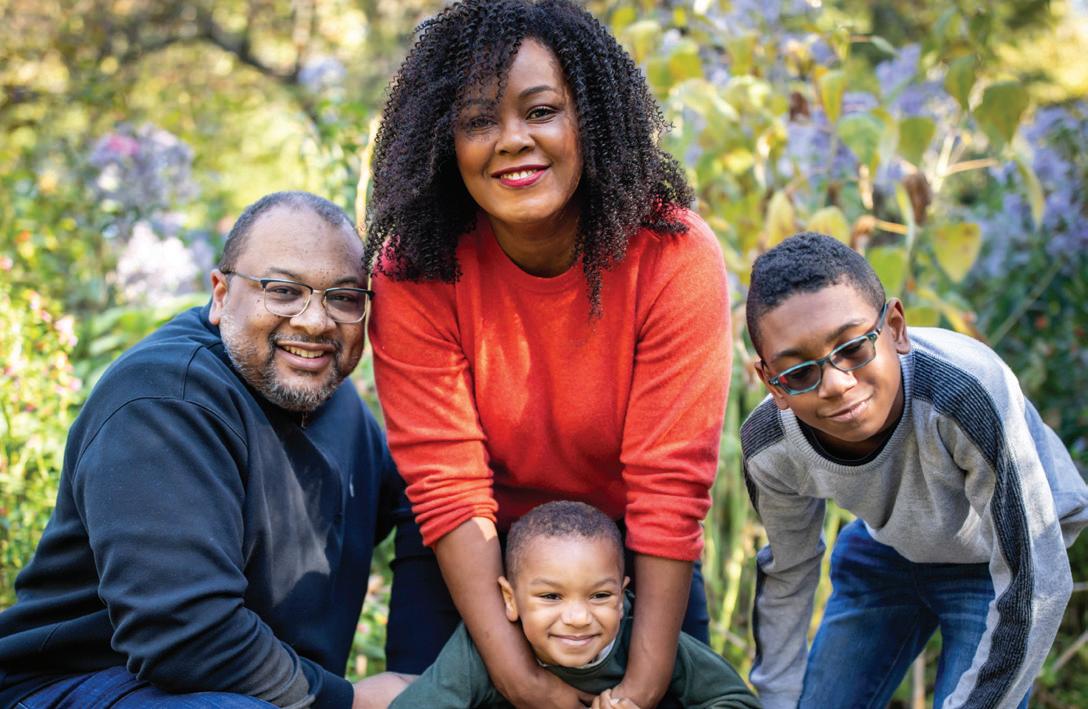
4 minute read
ALUMNI AUTHORS
Photo courtesy of Ericka Sóuter
The totality of motherhood
Using humor and honesty as she addresses some of the tougher realities of parenting, like substance abuse and postpartum depression, as well as day-to-day struggles, author Ericka Sóuter (C’97) seeks to show the totality of motherhood in her new book How to Have a Kid and a Life: A Survival Guide. Composed of in-depth research from professionals, testimonies from mothers around the world, and her own experiences, the book explores the myriad issues women face, from maintaining an identity to handling mom-shaming to dealing with changes in platonic, professional, and romantic relationships. Though the book generally focuses on what to expect after you have a child, she notes that one chapter addresses women who opt out of motherhood. “Women who don’t have children, or who wait to have children, are often criticized for that choice, and I don’t think it’s fair. It’s okay if you don’t choose motherhood,” Sóuter says. A journalist with over 20 years of experience, Sóuter attributes her passion for writing to her time at Georgetown. “When I enrolled at Georgetown, I intended to major in American government and maybe one day become a senator,” she recalls. On her journey to make an impact in government, she encountered English professors like Pamela Fox and Elizabeth Velez, who encouraged her to explore her gift for writing. “Professor Velez suggested I apply for an internship with People magazine. I had no interest in journalism at the time, but I wanted a job that would pay, so I decided to go for it. They offered me the job, and it was the most amazing experience I’d ever had.”
Sóuter traces her professional success—from working with media outlets like People, Essence, and Cosmopolitan, to being a contributing editor at Mom.com, to frequently appearing on Good Morning America—to her Hoya roots. “I love Georgetown. It directed me towards this amazing career. It’s where I met my husband. It’s where I made some amazing friendships, especially my Nevils Hall roommates from senior year. It is just a really special place.” Sóuter currently resides in New York City with her husband, Caleb Pitters (SFS’97), and sons Lex and Aidan. “One of the most important things I hope people take away from the book is that the people you surround yourself with matter.” • —Bhriana Smith
“I wrote the book I really wanted—and the book new moms will need,” says author Ericka Sóuter (C’97).
Futurist alumnus forecasts a nomadic human future
Singapore-based futurist Parag Khanna (SFS’99, G’05) uses the lens of geopolitics to research the forces driving mass migration. In his new book, MOVE: The Forces Uprooting Us, he forecasts that despite two years of COVID-19 lockdown, the future of human civilization will be defined by mobility. What drives voluntary and involuntary mobility around the world, Khanna explains, are forces like political instability, imbalances in labor markets, and climate change. His research analyzes trends in civil wars and conflicts, failing economies, technological disruption from AI and automation, and climate change displacement, and then synthesizes takeaways. “These deep, fundamental drivers of human mobility long predate COVID and will long outlast COVID,” Khanna says. “The mass migrations of the past are not only going to continue, but also expand significantly, because all of these drivers are in overdrive.”
In MOVE, Khanna predicts that more Asian populations will move into Central Asia and Russia, and that both Asian and African populations will move into Europe. In the Americas, he sees Canada taking leadership in accepting migrants, to the benefit of its cultural and economic future. And within the United States, he sees many people becoming climate migrants. “There’s a large number of climate refugees in America, from forest fires, floods, and rising sea levels,” Khanna says. “America itself needs to think about climate adaptation and migration as a domestic issue, as well as a global one.” MOVE also explores youth subcultures like #VanLife—in which young people voluntarily forego hyperconsumerism to live sustainably while staying digitally connected—as an important signal of change. “One of the things I learned in this process of research is to take young people really seriously,” Khanna says. “We need to rebuild our economic, social, and political institutions to cater to their values, because they’re actually the right values to have for the kind of world we’re in today.” Khanna says his interdisciplinary work was deeply influenced by his undergraduate experiences in the Walsh School of Foreign Service, especially in Professor Charles Pirtle’s Map of the Modern World class.
“Georgetown is one of just a handful of institutions that continue the tradition of teaching classical geopolitical theory. Very few people have the breadth of knowledge across disciplines to actually teach it. And Charles Pirtle was that man for an entire generation.” Khanna remains close with Pirtle and connects his book to Pirtle’s class in particular. “One of the most important things that he taught us is the complex layering of physical, political, and human geography,” Khanna says. “That’s really fundamentally what MOVE is about.” • —Kate Colwell
Photo courtesy of Parag Khanna








